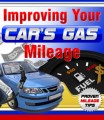Table of Contents
Foreword
Chapter 1:
Drive Moderately Not Aggressive
Chapter 2:
Use Cruise Control
Chapter 3:
Check Your Tires
Chapter 4:
Pulse And Glide
Chapter 5:
Ride The Slipstream
Chapter 6:
Use The Right Oil
Chapter 7:
Replace Air Filters
Chapter 8:
Tips About The Tank
Chapter 9:
Alternative Transportation
Chapter 10:
Buy A More Efficient Car
Sample Content Preview
Synopsis
Utilizing cruise control is a bit of gas-saving advice often on hints lists. This tip in theory is good, but reports of the actual road test showed significant results.
Cruise It
First of all, it smoothes out the driver’s accelerator input by precluding nervous “surging.” Secondly, it makes the driver take the long view of the road instead of responding to every shift in the traffic around them.
Cruise control guarantees that a driver sustains a common, steady speed while on the road, helping to do away with much of the stopping and starting that unnecessarily burn off expensive fuel. With gas prices rising across the country, utilizing cruise control is an easy, effective, economical way to step-up fuel efficiency and reduces out of pocket expenses.
Many cruise control systems are mounted on the steering wheel of autos and are easily accessible on either side of the horn. The buttons are placed on either side of the steering wheel and speed may be sped up or slowed with the touch of the buttons provided on the steering wheel console.
A few people find that cruise control can be hard to use because they feel like they aren’t doing much to control the car and while driving at night they may find it easier to dose off behind the wheel. If you’re one to dose off behind the wheel, never utilize cruise control.
As well, in spite of its gas saving advantages, cruise control isn’t for everybody and is not for all roads. It’s best for open city driving, generally flat roads, without hills where there’s not much need for a driver to stop and start.
The cruise control is designed for normal road conditions. It does not recognize when the pavement is slippery. Under slick circumstances, you need to be in complete control and monitoring road conditions. You are more likely to detect hydroplaning if you are not relying on the cruise control. With a few cars, it is possible that the wheels will in reality spin faster when the cruise control is on and the car runs into a slippery spot. Once the tires make contact with firm road once more, the car may skid or lose control.
On just about all cars, the cruise control is disengaged by tapping on the brake. In an emergency situation, this contributes a fraction of a second to your reaction time as well as the chance of the braking action itself causing a loss of control on a slippery road.
Another thing that’s crucial to note: if you are in a mountainous area you should switch off cruise. It will attempt to keep you up to the speed you’ve set and will use a lot of extra gas downshifting to lower gears to achieve this.
Synopsis
Regardless how many times drivers find out about the importance of tire pressure, virtually all of them do not do anything about it.
Check Them
People likely don’t like crouching beside their car in a busy filling station with fumes whirling around them. But is it significant? The response is yes, for a number of reasons. Correctly inflated tires are less likely to break down at high speeds. They wear down more evenly and, yes, they deliver better gasoline mileage. How much? Authorities on the subject swear by it.
So just how do you check your tires correctly?
Let the tires cool off before checking their pressure (tires are more inflated when warm, to a lesser extent when cold). You will then remove the cap from the valve on one tire. Push a tire gauge firmly onto the valve and take note of the reading. If you hear escaping air it means you haven’t placed the gauge correctly: it’s either pushed on cockeyed or you’re pushing too softly.
Next add air to reach the recommended pressure, which is listed on a sticker on the driver’s side doorjamb, in the car’s manual or on the tire itself.
If you overfill, you are able to expel air by pressing on the tiny metal stem in the middle of the valve with a fingernail or the tip of a pen or pencil. If you really need to guess at the pressure, 32 psi (pounds per square inch) is a in force guideline for most passenger cars with stock tires.
Now you can put the valve cap back on.
Duplicate this for each tire, including the spare (the condition of its pressure is a great deal of the time disregarded until it’s needed, and then it’s too late).
You’ll want to ascertain the tread depth too. The suggested depth differs with different types of tires. For a standard sedan tire, a penny pressed into the tread may give you an approximate reading. If you are able to see any of Lincoln’s head, it might be time to replace the tire. A tread-depth gauge will give you a more exact reading. There might also be wear indicators constructed into the tread; if they are showing, replace the tire.
Be sure to check for even wear too. If the treads on the outside or inside are especially worn, you might need to rotate your tires or have your alignment checked over.
Each set of tires is different and every vehicle is different. So do your own tests to see what inflation setting gives you the most beneficial gas savings.
Other Details- 1 Ebook (DOCX, PDF), 45 Pages
- Ecover (JPG)
- File Size: 13,602 KB
- Gas Mileage Calculator(XLS)
- I enjoy(DOC)














